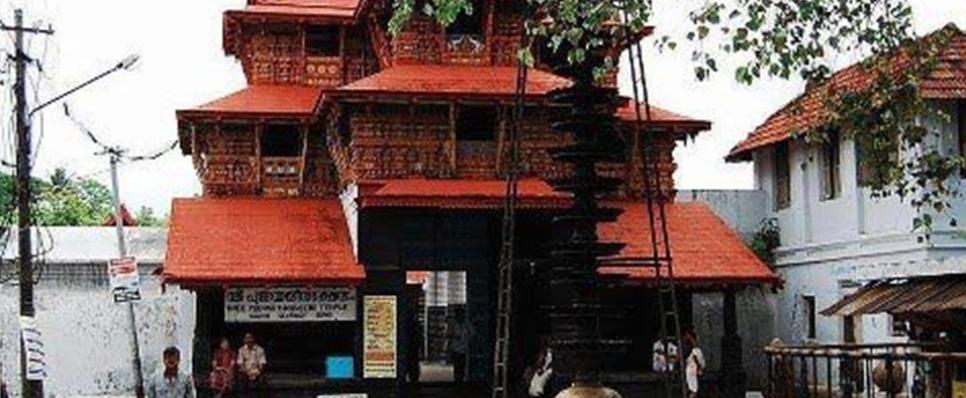Published: 01 Sep 2017
Golden entrance of Sree Poornathrayeesa temple

One of the eight royal temples of the former Cochin Kingdom is the eminent ancient temple of Sree Poornathrayeesa Temple. The temple, dedicated to Lord Vishnu, is believed to be standing strong since 5,000 years in Tripunithura suburb of the capital city of Kochi in Kerala. The Lord Vishnu is depicted in the form of Santhanagopala Murthy which means “saviour of infants”. The distinguished name of Lord Vishnu “Poornathrayeesa” is a combination of three words i.e. poorna which means complete, thraye is three while esa is the Ishwara or God of Knowledge.
In 1920, the ancient temple was destroyed by an accidental fire; the then King of the Cochin state ordered the reconstruction with metals and minimize the use of wood. The prominent architect Late Sri Eachara Warrier was assigned the task of redesigning the sacred temple. Sri Warrier, considering the divine aura of Lord Vishnu and the pious feelings of the devotees, skilfully designed concrete structure of the temple to re-establish the traditional ancient temple experience. The concrete temple is believed to be the first of its kind temple in the god’s own country, Kerala.
The present robust structure of the temple is a two-storied gopuram (monumental tower). The entrance of the sanctum sanatorium is intricately covered with golden sheets by the proficient artisans. The usage of gold in the construction of the temple reminisce the royal family of the erstwhile Kingdom of Cochin.
In addition to the majestic and traditional architecture, the temple is popular for the grand celebration of various festivals. Sree Poornathrayeesa Temple commemorates famous festivals such as Moosari Uthsavam, Atha Chamayam, Onbathanthi Uthsavam, Vrischigothsavam, Sankara Narayana Vilakku, Para Uthsavam, and Uthram Vilakku. Of all the festivals, Vrischigothsavam or Vrishchika Ulsavam is the most significant and splendid one. This eight-day festival is celebrated in the Malayalam month of Vrischigam which falls between November-December. In this festival, the five revered temple elephants are used in the procession for carrying the idol. These elephants are adorned with gold caparison, bells and necklaces. Additionally, as per ritual, a “golden pot” is placed on a raised platform which brings good luck to the donors.
The usage of gold in the construction of the temple as well as in various other forms demonstrates the significance of the yellow metal throughout history. The traditional rituals and beliefs combined with gold are rigorously followed even today which exhibits India’s love and obsession for the yellow metal.











